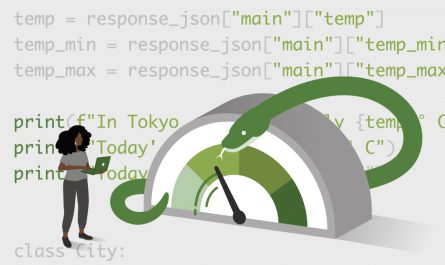
Description
Reactive Programming is a new programming paradigm that’s well suited for applications that are required to perform better under heavy load.
Reactive Programming is built on the foundation of reactive streams specification. Project Reactor is an implementation of Reactive Streams Specification.
Code that’s written using Reactive programming has these qualities:
- Fundamentally Asynchronous
- Non Blocking
- Functional Programming Style of code
- Backpressure support
This course is designed to provide both theoretical and practical knowledge about reactive programming using Project Reactor. This is a pure hands-on oriented course and all the concepts are explained by writing code.
Course Curriculum:
Section 1: Getting Started With the Course
- This section covers the course objectives and the prerequisites that are needed to make the most out of this course.
Section 2: Introduction to Reactive Programming
- In this section, I will introduce you to reactive programming and its related concepts. The following topics are covered in this section
- Why Reactive Programming?
- What is Reactive Programming?
- Introduction to Reactive Streams
Section 3: Getting Started with Project Reactor
- In this section, I will introduce you to the reactive library project reactor, and the reactive types Flux and Mono that forms the foundation for Project Reactor
- Introduction to Project Reactor
- Reactor Reactive Types – Flux and Mono
Section 4: Setting up the Project for this course
- In this section, I will set up the base project that will be used for the rest of this course.
Section 5: Functional Programming in Modern Java
- In this section, I will explain Functional Programming and the benefits that are tied with this programming style
- Imperative Style vs Functional Style
Section 6: Let’s create our very first Flux and Mono
- In this section, I will code and explain the reactor types Flux and Mono using simple examples
- The following topics are covered as part of this lecture:
- Let’s write our very first Flux
- Let’s write our very first Mono
- Reactive Stream Events
- Testing Flux using JUnit5
Section 7: Transforming Flux and Mono
- In this section, I will code and explain different operators that can be used to transform data from one form to another using project reactor
- The following topics are covered as part of this section:
- Transforming Data Using Operators in Project Reactor
- Transform using map() Operator
- Reactive Streams are Immutable
- Filter using filter() Operator
- Advanced transform using the flatMap() Operator
- Asynchronous Operations using flatMap() Operator
- Advanced transform using the concatMap() Operator
- flatMap( ) operator in Mono
- flatMapMany( ) operator in Mono
- Transform using the transform() Operator
- Handling empty data using defaultIfEmpty and switchIfEmpty() Operators
Section 8: Combining Flux and Mono
- In this section, I will code and explain different operators that can be used to combine the reactive streams using project reactor
- The following topics are covered as part of this section:
- Introduction to Combining Reactive Streams
- Combining Reactive Streams using merge() and mergeWith() Operators
- Combining Reactive Streams using mergeSequential() Operators
- Combining Reactive Streams using zip and zipWith() Operators
Section 9: Build Movie ReactiveService using Project Reactor
- In this section, we will build the Reactive MovieService using all the skills that we have acquired so far
- Overview of this MovieService
- Retrieve all of the MovieInfo
- Retrieve MovieInfo by movieId
Section 10: doOn* CallBacks – Peeking into a Sequence
- In this section, I will code and explain the techniques to peek into the individual events that’s emitted by the publisher
Section 11: Exception/Error Handling in Flux and Mono
- In this section, I will cover the different exception handling strategies that are part of the Project reactor
- The following topics are covered as part of this section:
- Exceptions in Reactive Streams
- Introduction to Exception Handling Operators
- onErrorReturn() : Exception Handling Operator
- onErrorResume() : Exception Handling Operator
- onErrorContinue() : Exception Handling Operator
- onErrorMap() : Exception Handling Operator
- doOnError() : Catching Exceptions and Throw the error
- Error Handling Operators in Mono
Section 12: Implement Exception Handling in Movies Reactive Service
- In this section, I will implement the exception handling in the MoviesReactiveService.
- Exception Handling in MoviesReactiveService using onErrorMap
- Test Exception in MoviesReactiveService using Mockito
Section 13 : Retry, Repeat using retry(), retryWhen(), repeat()
- In this section, I will code and implement different techniques to retry the exceptions in the Reactive Streams using Project Reactor
- The following topics are covered as part of this section:
- Retry Exceptions using retry() and retry(n)
- Retry Specific Exceptions using retryWhen()
- Repeat a Sequence using repeat() and repeat(n)
- Repeat a Sequence repeatWhen()
Section 14: Reactors Execution Model – Schedulers, Threads, and Threadpool
- In this section, I will explain the threads and the execution model behind the project reactor
- The following topics are covered as part of this section:
- Reactor Execution Model
- Switching Threads using publishOn()
- Switching Threads using subscribeOn()
Section 15: Making Blocking Calls in MovieReactiveService
- In this section, we will add an enhancement to the MoviesReactive Service by adding a blocking call in to the pipeline.
- Making Blocking calls in MovieReactiveService
- In this lecture, we will code and learn about how to make blocking calls using project reactor
- Making Blocking calls in MovieReactiveService
Section 16: BackPressure
- In this section, I will explain the concept of backpressure in reactive programming
- The following topics are covered as part of this section:
- Introduction to BackPressure
- Let’s implement BackPressure
- Write a JUnit test for BackPressure
- Handling Backpressure using onBackpressureDrop()
- Handling Backpressure using onBackpressureBuffer()
- Handling Backpressure using onBackpressureError()
Section 17: Explore Data Parallelism in Project Reactor
- In this section, I will explain about introducing parallelism into the reactive pipeline
- The following topics are covered as part of this section:
- Parallelism using parallel() and runOn() operators
- Parallelism using flatmap() operator
- Parallelism using flatMapSequential() operator
Section 18: Cold & Hot Streams
- In this section, I will explain about cold and hot streams in Reactive Programming
- The following topics are covered as part of this section:
- Cold & Hot Streams
- Cold Streams
- Hot Streams – ConnectableFlux and different options
Section 19: JUnit Testing using VirtualTimeScheduler
- In this section, I will explain the use of VirtualTimer to decrease the execution time of test cases.
- StepVerifier using VirtualTimeScheduler
Section 20: Build NonBlocking RestClient using WebClient
- In this section, we will write a nonblocking rest client using Spring WebClient
- The following topics are covered as part of this section:
- Overview of the Reactive Movie API
- Build the non-blocking MovieInfoService RestClient
- Build the non-blocking Review RestClient
- Build getAllMovies non-blocking MovieReactiveService Client
- Build getMovieById non-blocking MovieReactiveService Client
- Integrate WireMock for Integration Tests
Section 21: Programmatically Creating a Flux
- In this section, I will code and explain the techniques that are available to create a flux programmatically.
- The following topics are covered as part of this section:
- Create a Flux using create()
- Create a Flux using push()
Section 22: Debugging in Project Reactor
- In this section, I will demonstrate different approaches that are available when it comes to debugging reactor error messages.
- The following topics are covered as part of this section:
- Debug Exceptions using “checkpoint” operators
- Debug Exceptions using Hooks.onOperatorDebug()
- Production-ready Global Debugging using “ReactorDebugAgent”
By the end of this course, you will have a complete understanding of Reactive Programming, write code using the Reactive Programming Principles, and when to use them in your project.
Who this course is for:
- Any Java Developer who is interested in exploring Reactive Programming
- Any Java Developer who has the need to write fast performing code under heavy load
- Any Java Developer who is interested in learning all the features of the “Reactor” Reactive Programming Library
Requirements
- Prior Java Experience is mandatory
- Experience writing test cases using JUnit
- Experience working with Intellij or any other IDE
Last Updated 5/2021
Download Links
Direct Download
Reactive Programming in Modern Java using Project Reactor.zip (2.9 GB) | Mirror
Torrent Download
Reactive Programming in Modern Java using Project Reactor.torrent (106 KB) | Mirror


